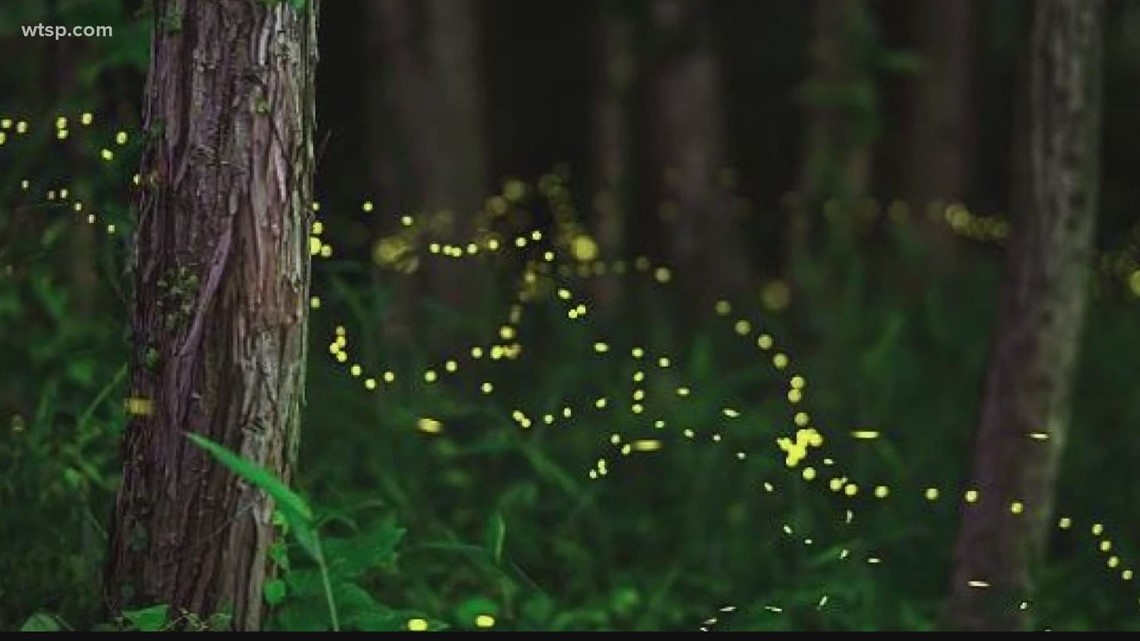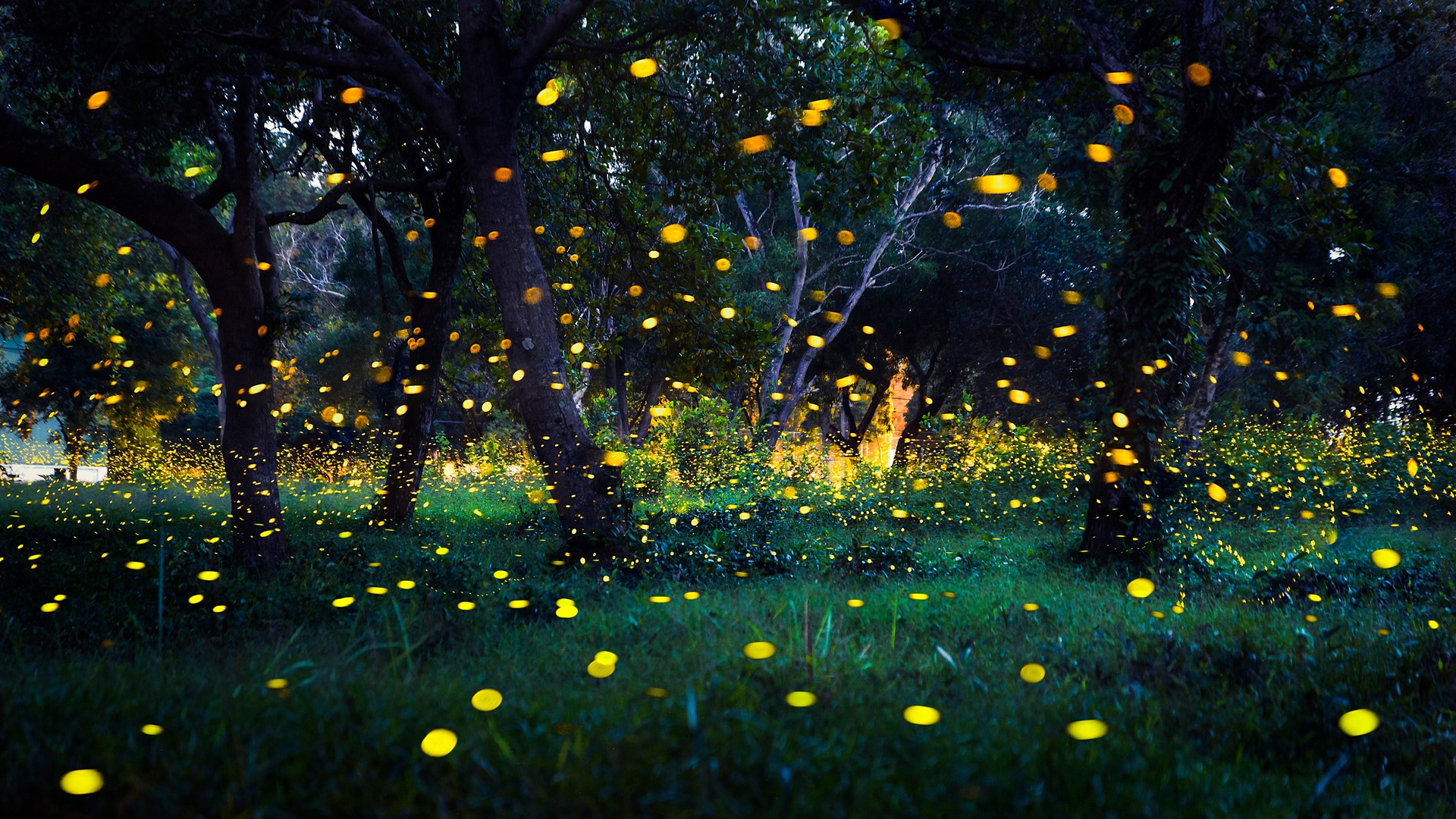INDIANAPOLIS — If, in your catalog of summertime memories, you swear there used to be more lightning bugs than what you’re now seeing from your front porch vantage point, it may not just be the nostalgia talking.
Researchers and advocates caution a blend of increased development, widespread pesticide use and light pollution have put fireflies in a precarious position across the world.
Dr. Clifford Sadof is an entomologist and extension specialist at Purdue University, whose research centers on pests on trees and shrubs. He said the apparent decline of many lightning bug species can be traced back to ongoing "climate chaos" threatening insect populations in general.
"Some of the insects are getting a little bit out of sync with what was going on with their biology, say 30 years ago," Sadof said.
Firefly Conservation & Research is a Texas-based organization that works across the country to spread awareness about the ongoing decline of fireflies across the United States.
They were one of the first organizations in the country that sounded the alarm on the ongoing plight of lightning bugs.
"The main issue seems to be habitat loss. There is a lot of land conversion from native habitats to more industrialized, or suburban areas, and also to agricultural areas," said Ben Pfeiffer, a firefly researcher and the organization's founder. "Over the last 100-150 years, this land conversion has really sped up the loss of critical habitats for firefly species."
Pfeiffer started the group in 2008 after noticing there were fewer fireflies showing up in his part of Texas.
His suspicions that fireflies were indeed on the decline were reiterated as recently as 2021, when researchers from the Xerces Society, the ABQ BioPark and IUCN Firefly Group completed the first assessment of the extinction risk for lightning bug species in North America.
Their report found of 128 evaluated species, 14 are threatened with extinction. Overall, one in three species assessed by the organizations may be at risk of extinction.
The decline of lightning bugs in any area, Pfeiffer said, doesn’t bode well for the rest of the environment.
"Fireflies are a really good indicator of the health of the environment. They kind of act as nature's pest control. The larvae are really predacious, and they crawl along the ground, eating snails and slugs and stuff like that," Pfeiffer said. "If the environment is really poor, then a lot of times, those insects that they feed on will be gone."
Fireflies are not actually flies. They are beetles belonging to the family lampyridae. In Indiana, there are 43 species of lampyridae. Of those species, 31 are considered lightning bugs. The others are called "dark fireflies" because, according to the Indiana Department of Natural Resources, they do not flash.
They require warm, humid places for breeding, such as streams, rivers or wetlands.
Three years after Gov. Eric Holcomb signed legislation officially designating Say's firefly as the state bug of Indiana, he signed a bill environmentalists said would remove essential protections for one of it's most crucial habitats.
Senate Enrolled Act 389 made sweeping changes to how the state classifies wetlands, eliminating a 2003 law that requires the Indiana Department of Environmental Management to issue permits for construction and development in state-regulated wetlands. It also ended enforcement proceedings against landowners accused of violating current law.


Those rollbacks on wetlands protections can, Pfeiffer said, have detrimental impacts for fireflies. Wetlands are bordered by riparian corridors, a naturally occurring border that provides a perfect habitat for fireflies to grow and breed.
"That habitat occupies about 1% of all land in the United States. And so, it's a very small portion of land, but it's one that is rapidly disappearing in many areas," Pfeiffer said. "A lot of times, cities will go in and they kind of manicure these particular parks because that's what people like, but it's not really typically good for wildlife."
The riparian corridors contain consistent moisture, providing a perfect habitat for female lightning bugs to lay eggs in the mud.
"[Cities] come in and they put in like, large concrete barriers that surround a creek or a river or something like that. But they're basically just destroying that riparian habitat to create something that people can walk on," Pfeiffer said.
As development advances, more threats abound for fireflies. The widespread use of broad spectrum pesticides, in particular, has a harmful effect on lightning bugs.
"We have issues with controlling roaches and other pest insects, but trying to prevent those pesticides from getting into you know, native areas, or spraying things that kill non-target species, like fireflies, would be great," Pfeiffer said.
Overall, though, these experts reiterate there are steps we can take to protect lightning bugs right in our own backyard.
"If you're a gardener, for example, you're one of fireflies' best friends because you introduce really rich soil to your yard and a lot of different plants. This encourages snails and slugs to kind of take up residence, which fireflies eat," Pfeiffer said.
Here are more steps we can take to help protect lightning bugs:
Create our own habitat. Installing water features in our yards and not over-mowing are some ways we can nurture local firefly populations. "Become a Certified Firefly habitat. And then, demonstrate and let others know that this area is important, and it's worth protecting," Pfeiffer said.
Turn our lights off. We can reduce light pollution which interferes with firefly mating season — and cut down on energy bills in the process!
Create a compost area. Logs and leaves provide the perfect environment for fireflies to grow. Don’t rake them up and throw them away.
Stay away from broad-range pesticides. Soap, stinging nettles and rhubarb provide natural alternatives to pesticides that can harm firefly populations.
If you capture them, don’t poke holes in the jar. Fireflies thrive in the humidity and typically eat insects. Don’t expect them to live for long if you stick them in a jar with a bit of grass. "They're very magical. And I think that it's perfectly great to instill a sense of wonder of nature. But we don't want to kill them in the process. It should be more of a catch-and-release thing," Clifford said.

